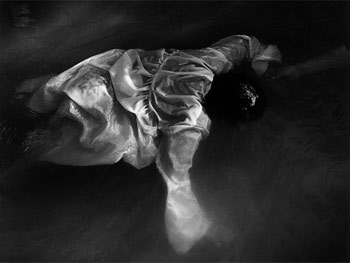
Graciela Iturbide
Chalma, Mexico, 2008
©Graciela Iturbide, 2009
From June 16th to September 6th 2009 at the Fundación MAPFRE. Azca Hall
Curator: Marta Dahó Masdemont
Works: More than 180 photographs
The most important works from her career as a photographer, along with recent shots that are barely known in Europe, form part of the sweeping retrospective that MAPFRE is dedicating to Graciela Iturbide, one of the most internationally acclaimed Mexican artists today.
INSTITUTO DE CULTURA FUNDACIÓN MAPFRE (Sala Azca)
Av. General Perón, 40 portal D 1ª planta
Madrid (España)
The winner of the Eugene Smith Prize in 1968 and the prestigious Hasselblad Foundation International Award in 2008, Iturbide got her training at Mexicos Centro de Estudios Cinematográficos and started her career in art in the late 1960s under the tutelage of Manuel Álvarez Bravo. Her images hover between the poetic and symbolic and the documentary, and in them she mixes references to traditional Mexican culture, which is closely tied to nature, with allusions to the importance of rite and religion in the everyday lives of the people of that country. In Mexico, Iturbide is particularly famous for her portraits of Seri Indians and the women from Juchitán (Oaxaca), but this artists photographic oeuvre has also been developed in the United States, India, Italy, Madagascar and Spain based on Iturbides fascination with the multiple expressions generated by cultural diversity all over the world. This fascination has led her to turn trips into an indispensable working dynamic and a necessary tool in her constant learning as a creator.

Graciela Iturbide
Khajuraho, India, 1998
©Graciela Iturbide, 2009
Influenced by photography masters like Brassaï and Christer Strömholm, Iturbide manages to avoid both the obvious and the anecdotal in the frames of her shots, instead imprinting them with a personal and almost mystical vision of the everyday. This vision turns her works into unique pieces from which unexpected metaphors blossom, as in Nuestra señora de las iguanas (Our Lady of the Iguanas) and El señor de los pájaros (The Lord of the Birds).
The show that will be on display at MAPFRE Azca until September starts with her latest photographs and then travels backwards to her earlier work, refusing to follow a strict chronological order and instead delving into the thematic varieties that best define her imagination as an artist. “Graciela Iturbide” is organized into several different sections: Landscapes and Objects, devoted to her output from the late 1990s and focused on nature and randomly found landscapes wreathed in mysterious atmospheres; Fridas Bathroom, comprised of shots of one of the bathrooms in Frida Kahlos house; The Botanical Garden, with images of the most famous garden in Oaxaca; In the Name of the Father, which features Graciela Iturbides vision of the animal sacrifice rituals conducted in the mountains of Oaxaca; Mexico: Festival and Death Rituals; Other Borders; Juchitán; and The People of the Sand: The Seri.
Dovetailing with this show, a catalogue-anthology of Graciela Iturbides oeuvre has been published featuring all the images on display in this exhibition and texts by its curator and by Mexican writer and journalist Juan Villoro.





